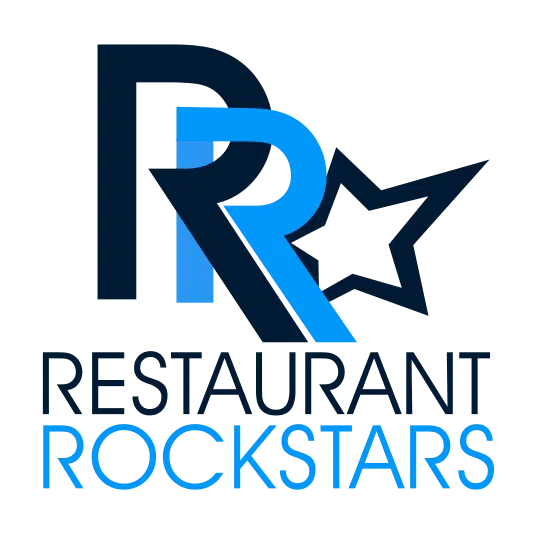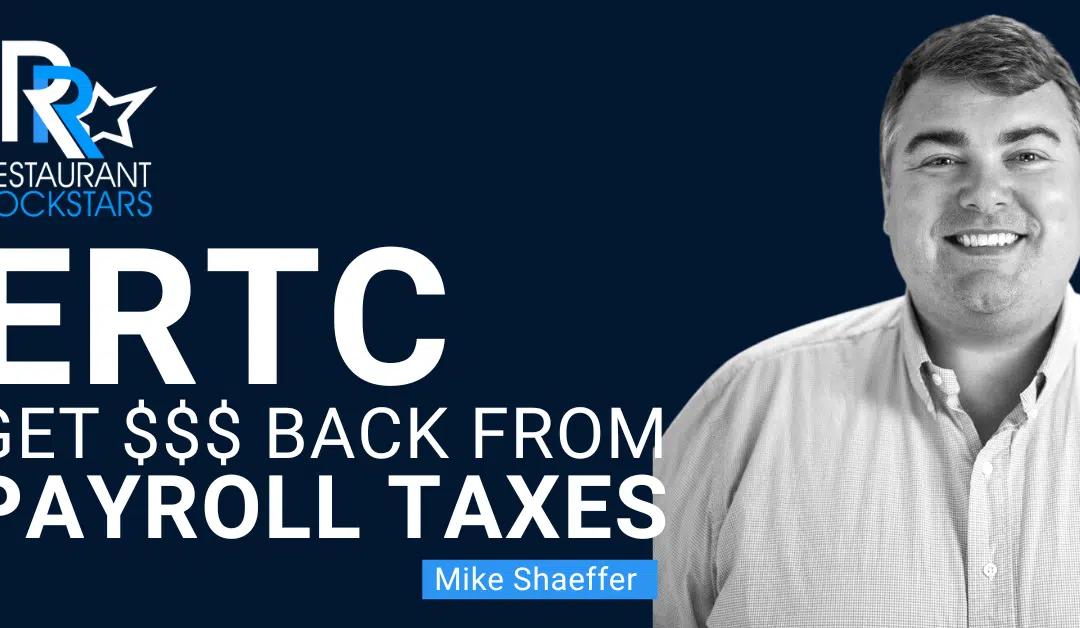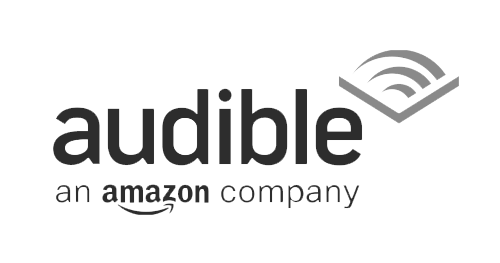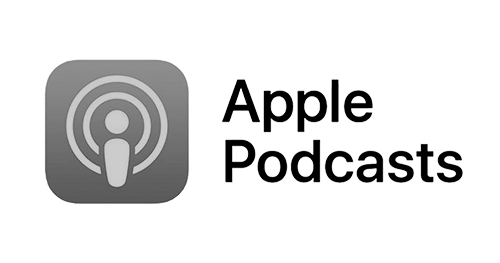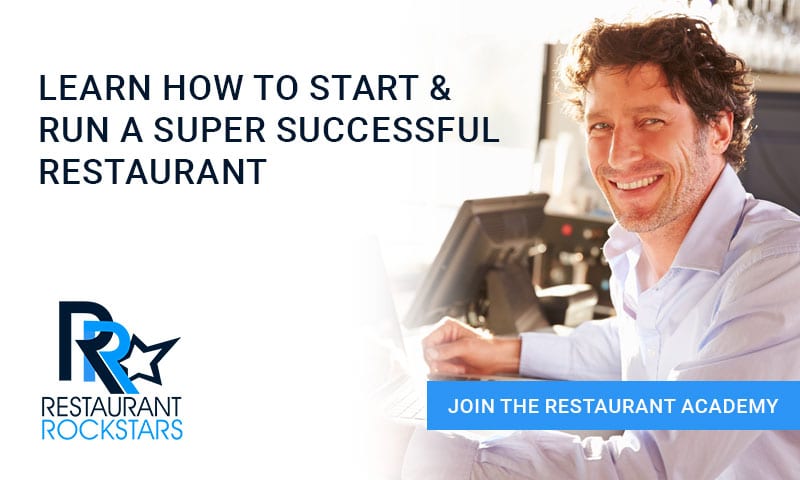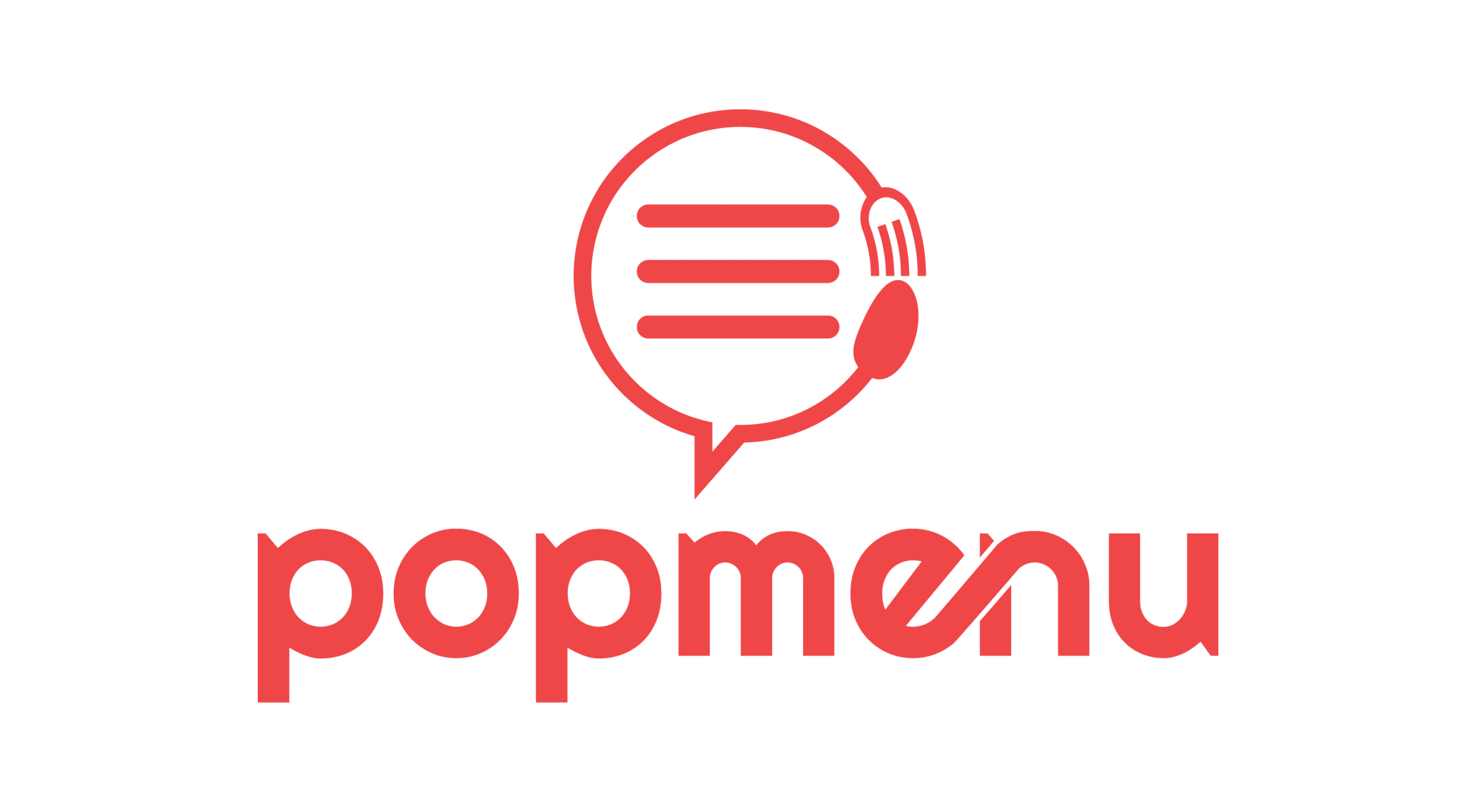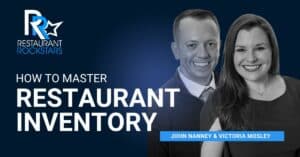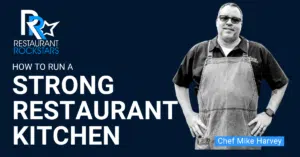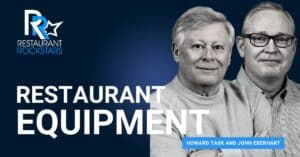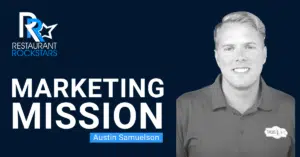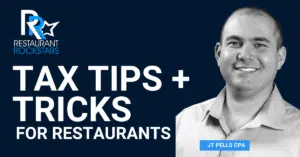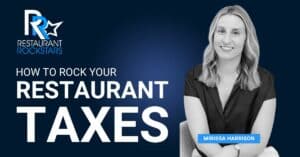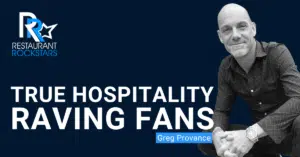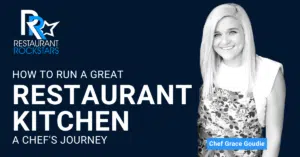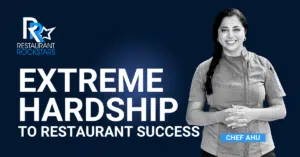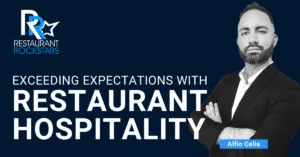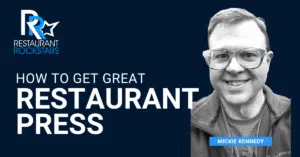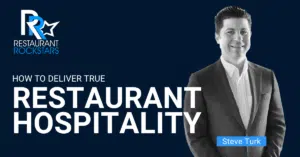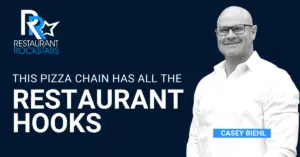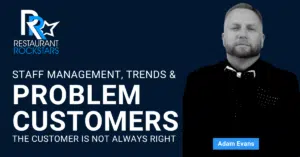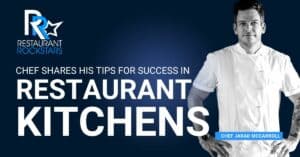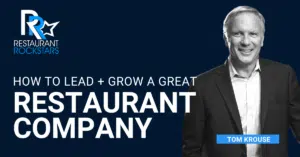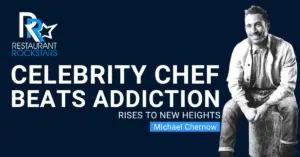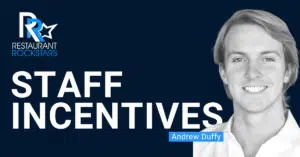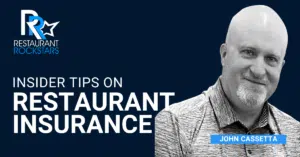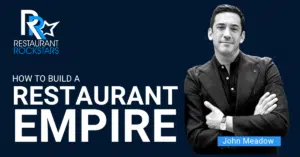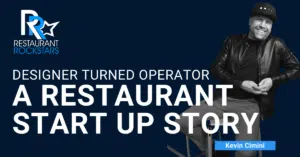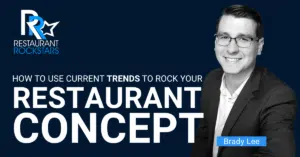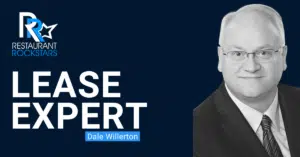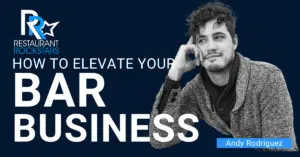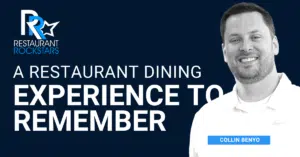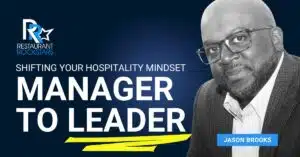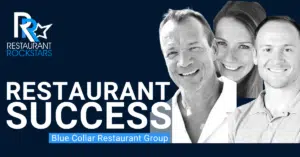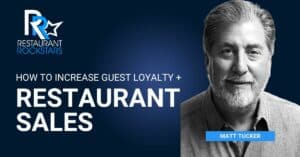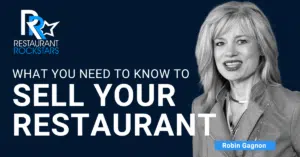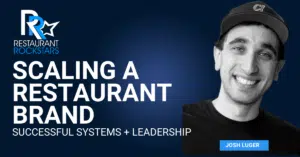Restaurant Rockstars Episode 321
Get BIG Money Back from your Payroll Taxes via ERTC
LISTEN HERE OR ON YOUR FAVORITE PODCAST PLAYER
Prefer to watch the interview?
Click the video below.
Nothing you do today is more important!
This episode may be the last Hail Mary you receive from the government due to Covid 19.
In case you haven’t heard, your restaurant can claim lots of money without paying it back. This is money you’ve already paid in payroll taxes, and the IRS will pay it back to you.
In this episode of the Restaurant Rockstars Podcast, I’m speaking with Mike Schaeffer of Whirks, an accounting firm specializing in payroll taxes and the ERTC
Listen as Mike explains:
- What the Employee Retention Tax Credit (ERTC) is – a newly expanded refundable tax credit given to employers who are keeping their employees on payroll despite COVID-19 related challenges and losses.
- How Much your business can qualify for
- How to qualify
- When you will receive your money
- How to get a no obligation consult for your business
There’s No catch and it’s Not too good to be true, but you must act quickly as the sooner you apply, the sooner you’ll get your money.
Contact Whirks at this link: https://page.whirks.com/employee-retention-credit . I personally worked with their team, and they got my restaurant a nice sum of cash from the payroll taxes I paid. They were professional and super easy to work with.
Watch or Listen to this episode and then go out there and Rock YOUR Restaurant!
Roger
Connect with our guest:
https://page.whirks.com/employee-retention-credit
https://www.facebook.com/whirks
0:00
because what you’ve been told your whole life is if it’s too good to be true, it’s probably not true. And this is, and I don’t even like saying this, but it is one of the this is one of those rare exceptions where it is too good to be true. And yet it is still true. A lot of people haven’t heard about this, because it was released in summer of 2020 as part of the Cares Act, at the same time that the paycheck Protection Program was released.
0:24
Hey there,and welcome back. Thanks for joining me. You know, this may be the single most important episode that I release all year, it’s all about an opportunity to get significant amounts of money back from the Internal Revenue Service money you’ve already paid. Now my guest is Mike Schaeffer, of a company called Whirks based in Tennessee, and they are specialists at not only customer service, but doing all the heavy lifting and doing this for you so that you get this money back. You got to listen to this episode, all the ins and outs and as Mike says, it sounds too good to be true, but it really isn’t. And I know from experience because I myself has have worked with Mike and works and I’ve gotten all that money back that I was entitled to so don’t miss this episode and then go get your money.
1:12
You’re tuned in to the restaurant rockstars podcast powerful ideas to rock your restaurant. Here’s your host Roger Beaudoin.
1:26
Rock Stars, restaurants have been hit hard the last few years, which means restaurant owners and staff are working harder than ever. Trying to meet the demands of in person hospitality can be really demanding, which is why I recommend pot menu answering pot menu answering turns every phone call into an opportunity. It uses artificial intelligence to answer the simple questions that are tying up your phone lines like can I make a reservation or where are you located, and over 50% of restaurant guests are happy to have their questions answered by an automated system. Within the popmenu platform you can customize answers for your restaurant and choose the voice your guests here, and even send follow up links via text message. Popmenu answering picks up your phone 24/7 365 days a year allowing you and your team to focus on what matters most pleasing your guests, prevent lost customers and impress your guests with popmenu answering. And for a limited time my listeners can get $100 off their first month plus lock in one unchanging monthly rate at popmenu.com/rockstars go now to get $100 off your first month and learn more about pop menus full collection of tools at popmenu.com/rockstars.
If you haven’t heard of the employer retention credit, your business can receive lots of money back from the IRS money you’ve already paid in payroll taxes. Now the ERC program as it’s known is available if your operation had fewer than 500 employees, you had to shut down or partially suspend your business or you had at least a 20% reduction in business due to COVID 19 in any quarter of 2020 in the first three quarters of 2021. Now how much is that credit up to $7,000 back per employee per quarter for 2021 and up to $5,000 per employee in 2020. Listen if you have 10 employees today and meet the requirements you could receive up to $260,000 back into refundable tax credit. Now the faster you apply, the faster you get the cash think of it as found money that you can use for any purpose payroll cost of goods, business improvement or other business expenses. Again best of all you do not need to pay this money back now Whirks as a company that will do all the heavy lifting for you and get your business back the money that’s due. I’m speaking from experience here with Whirks I received a sizable amount back in all available quarters for my former restaurant and I couldn’t be more pleased with their service their people and their process for a no obligation konsult Click the link for Whirks in the show notes to this episode. Don’t miss out. Get your consult today.
Welcome back, everyone. This is the restaurant rockstars podcast. Hey Mike, how are you today?
4:22
I’m doing good. Roger, how are you?
4:24
I’m really excited to have you here because this is like the biggest thing that restaurants need to be aware of. Before we get into what the ERC program is all about my guess No, I always start with you know, have you ever worked in a restaurant before and I’d love to hear your story.
4:39
Yeah, my my first job right out of or I guess still in high school. I worked at a fast food place here in the Memphis area. It was a kind of a burger joint. A little local restaurant that about five locations here in town. And I learned that restaurants are hard Yeah, thank you. It was, it was, it was it was fun, fast paced job. I enjoyed that part of it. But, you know, looking at my managers and even I was able to have a little bit of relationship with the owners of that restaurant. There’s a lot of work, it’s a lot of work a lot of long hours to get the things up and running, to get up staffed appropriately to keep them operationally efficient. It was really an eye opening experience, especially as a kid who it was my first job,
5:26
what did you do there?
5:28
I did a little bit of everything. So I was a front desk cashier would have to jump in the back and clean up every once in a while or cook. Wow, was there a few hands on? Oh, yeah, do a little of everything.
5:43
So you got an introduction to that word hospitality if you were dealing face to face with the guests, or the customers, you know, and that sort of thing. And, you know, I remember my first job a long, long time ago is as a dishwasher. And my audience may know that I was very quickly promoted the bartender, and that’s where that whole wow, if I’m really nice to these people, I can make a good amount of money doing this. But it was more it was more genuine for me. Like I took a personal pride in pleasing the guest and over delivering on their experience. And little did I know that someday I would own my own restaurants. I never would have thought that. But you know, this is a business of pride and passion. And for some of us, it develops very early. So thanks for sharing that with us. What do you like to do outside the office? If and when you have any free time?
6:33
Yeah, free time is is tough to come by. I do have four kids ranging from three years old, years old. And so they are fully engaged in football, football, baseball, soccer, all the sports. And so we’re jumping around running around to different activities. When we will we can get away my wife and I can get away we typically are trying to do something that’s a little more active on the go. I enjoy fly fishing hanging out in the mountains just getting away. It’s always a good time. But the kids keep us pretty busy.
7:04
I have two teenagers now 15 and 17. And they’re both well one of them just got her learner’s, well, no, she, she took the driving exam or whatever. And she’s got chicken drive with us. As part of the learner’s permit deal. The older one has her license, they’re both super involved in sports. So that’s awesome. But you mentioned you got a three year old I remember those days, they were, they were challenging it, they were so gratifying and so much fun. And I miss when my kids were little. And everyone says, yeah, it goes by so fast. But now you got a range of ages. So you can enjoy every aspect of being a parent with all the different activities and the different ages, your kids. So that’s terrific. And they all have different life
7:47
stages all at one time. And everybody that has some older kids, they always say the same thing, you know, cherish your why you can’t. And I wish my kids were still that age. And so it’s helpful to you know, have some context around that. But I have the oldest three are all boys. And then the youngest that three year old is a girl. And so that three year old runs the house. She’s the boss of everybody has everybody wrapped around her fingers. And she keeps us very, very engaged.
8:15
Yeah, that’s terrific. Well, I hope you all stay well and enjoy family life. That’s great. Mike, thanks so much for sharing that story. So let me ask you about works. And what works is all about know you’re the chief operating officer of works. And I’d like to know, if you could tell our audience you know, what you specialize in. First of all works is spelled w h I r k s. So it’s, it’s pronounced works. But it’s spelled not as you would typically think of it, but tell us that first. And then I really want to dive into this program because everyone’s gotta pay attention to this if they haven’t already done. So this is something they need to do now. And it is time well spent. It’s a priority. So we’ll get into that. But first tell us about workplace.
8:58
So works is a sister company of Patrick accounting. Patrick accounting started in 2003, as a small business accounting shop here in the Memphis area. And what we realized pretty quickly is that most accountants are asked to do payroll. And so we decided to jump into some payroll stuff. And then over the time, we separated that out into its own separate brand separate organization called works, eventually called works. And what we really specialize in is helping small businesses run payroll processes and systems in a way that is really tailored towards their business. A lot of a lot of the business that we get are from real, national, big national competitors, that our call center oriented, is you know, you pick up the phone and you’re talking to somebody new every time and we really, really like to take a more personalized approach. And so all of our clients have dedicated people that are working on their accounts, we have low turnover. So you have some relationship with the people that you’re working with, and We really found a niche in the restaurant world, because restaurants have unique requirements as it comes to payroll, you know, as you know, dealing with tipped wages versus regular wage employees, work time requirements, all those types of things. So we have some really, really great technology that allows us to deliver payroll processing systems to our clients in a way that really serves their needs. And with that, what we’re really talking about today is the employee retention tax credit came out a couple of years ago with with the Cares Act. And it really put payroll processing companies like ours at works into a really unique place because that tax credit is really based on or at least the a lot of the calculations are based on payroll information. And so it gave us gave us a unique opportunity already having that information for our clients. To turn that into a really quick, hey, we need cash in the door, we can make it happen as fast as we possibly can.
10:57
Okay, let’s go back to payroll because restaurants and literally other businesses file a 941 form on a quarterly basis that relates to payroll. So can you explain for us, for those of us who don’t process our own payroll, we simply, you know, send the report off to the payroll company or someone like works, and they file all this stuff for us, we don’t have to worry about or think about it. I couldn’t imagine having to take all that on in addition to running a restaurant, right? So no one really has the bandwidth for that other than the experts like you, you mentioned that your your specialty is really that one on one guest customer service, really. So what exactly is contained in a 941 report, because that is the basis for all of this program we’re talking about right, and then we’ll explain if you would, exactly what ERC means.
11:47
A 941 is a quarterly payroll tax return that’s filed with the IRS. So every employer that pays wages has to file these returns. And there’s generally a couple of different quarterly returns that you have to file 941 being the federal return, but there’s typically some state returns called a pseudo pseudo return. Really all that is, is telling those governmental agencies, how much dollars of wage you paid to all your employees, and all the taxes that you had to collect as part of that. And so the 941 is really a culmination of that. It’s telling the IRS wages that you paid federal withholding that you took out of your employees checks, and you’ve deposited into the IRS accounts, as well as the Social Security and Medicare. And that is the vehicle in which the IRS has decided to take advantage of the employee retention tax credit, which we commonly refer to as ERC, or er, TC. But really, it’s all the same thing. It’s an employee retention tax credit that was developed in 2020, as part of the Cares Act.
12:52
Now what’s really amazing is all these restaurants for literally, the seven quarters of the COVID 19 pandemic have paid all this money into the government. And now the government due to the Cares Act is now saying, you can get a percentage of that money back in, in turn as a credit, so you can get a little check to your bank account from the IRS. And that’s why everyone needs to pay attention. You know, there’s been a lot of notoriety about this. But I still find and I travel, I’m traveling quite a bit now Mike giving presentations at speaking events. And when I talk about, you know, the ERC and all that sort of thing, and you got to take advantage of this, there are still restaurants out there that haven’t even heard of it or even applied for it. So that’s what’s really amazing. So let’s talk about the parameters to qualify, there’s there’s several things that are easy to qualify for yet you have to meet the criteria. So let’s talk about that.
13:46
Yeah, so we’ve had this very similar experience, Roger, whenever, whenever we started to go to market with some ERC services, what we learned is that a lot of people were hesitant to really pick up the phone and talk with us. Because what you’ve been told your whole life as if it’s too good to be true, it’s probably not true. And this is, and I don’t even like saying this, but it is one of the this is one of those rare exceptions where it is too good to be true. And yet it is still true. A lot of people haven’t heard about this, because it was released in summer of 2020 as part of the Cares Act, at the same time that the paycheck Protection Program was released. PPP was a really big deal and a lot of restaurants and other business owners took advantage of that program. And at that time, if you took advantage of PPP, you were not eligible automatically disqualified for any ERC funds. And that was true for all of 2020 and December of 2020. In the infrastructure bill that got passed, that criteria was removed. And so now, it was available for businesses that took advantage of PPP loans, even if they were forgiven, are now still eligible for the employee. retention credits, as long as they meet those criteria of eligibility, which is really two things. The first one is, you’ve had what’s considered a significant revenue reduction. The IRS defines this as a 50% reduction of revenue in any calendar quarter of 2020, when compared to the same calendar quarter in 2019. So what we do is we look at revenue numbers by calendar quarter for all quarters and 2019 and 2020. We do the same in 2021. And see, is there any quarters in which revenue was reduced that much? Now, for a lot of restaurants, that is close to being true if it’s not true. And that’s because we’ll that restaurants were the most picked on industry in the entire country when it came to the COVID 19 pandemic. Most states most most states out there decided restaurants are the primary spreader of COVID. So let’s start shutting you down. If you’re shut down, it’s hard to generate revenue, right? So you hit those revenue reductions. Now, in 2021, there was another bill passed that changed those rules a little bit for 2021. That said, if in 2021, your revenue was reduced by 20% or more, when compared to 2019 quarters, then you’re eligible for ERC. And so 2020 and 2021 ERC exists for both of those years, but the rules are a little bit different. And so it’s it really is important to look at revenue by quarter for those timeframes to really to determine your eligibility. And then the second reason why a business would qualify, and it’s not either or it’s not both, and it’s either or. So either you have a significant revenue reduction, or your business has been impacted by some type of government order that has restricted your operations. And this is where restaurants are most likely to qualify. Almost every restaurant in our country was limited at some time, in 2020, and 2021. For things like capacity restrictions, six foot distancing requirements, all of those things are qualifying events for ERC. So if in, let’s say March or April of 2020, your restaurant had to fully shut down or maybe moved to take out, carry out only type stuff, that’s a qualifying event, even when you were allowed to reopen, that may be a 25% 50% 75% capacity. during that entire timeframe that those orders were in place, you’re eligible for this tax credit program. And so in, you know, in some areas like here, we’re in Shelby County, Tennessee, Shelby County Health Department restricted our restaurants, to some extent, all the way through May of 2021. Well, significantly for the ERC program, that was five quarters in which wages that were paid by restaurants are now eligible for tax refunds. And so it’s true in a lot of different areas. And we’ve worked with clients in multiple states. And we see the same thing over and over again, there were some type of restrictions, they were a good portion of 2020. And then in some states, even going into 2021,
18:20
I can speak from experience from that, because as you know, Mike, I did own a restaurant during all of those quarters. And just to clarify, I believe that eligible restaurants can claim monies from every quarter in 2020, in the first three quarters of 2021. I think you mentioned that. And I can also speak from experience saying you helped me recover monies. And I think you did a tremendous job. So that’s why I’m having you on the podcast. I think it’s a tremendous program. But my restaurant had to shut down I believe it was eight weeks government mandate completely shut down. And that’s when everything went sideways. And we kind of saw it coming. And then it just hit like a ton of bricks like it did most restaurants. And I know that word pivot has been used to death, but we had to pull out every seat out of our restaurant. I mean, the booths, the seats, the tables, everything, and then turn it into sort of a, you know, out the door online ordering kind of thing, curbside pickup, I was delivering food with a mask and dropping bags, you know, that had been sanitized on the front steps, you know, crazy stuff. And then when we were allowed to reopen, then you mentioned okay, you had the minimum restrictions, a number of people in a space, then you had the six foot distancing, and it wreaked havoc on so many businesses. So yeah, this is absolutely true that all these things happen. So I can’t imagine any restaurant not being able to qualify for this program, because they hit those criteria. Now, you you also besides the partial or full suspension of business and the 50% and the 20% reduction of income and all that. Is there a number of employees that a restaurant can’t exceed Eat as well.
20:01
Yeah, the design here by Congress was really to help those small businesses that were struggling to, to use that overused word pivot into some of those different areas. And so they did put some restrictions on this program that’s based on employee count. So in 2020, that limit that that that ceiling is 100 full time employees. And so anybody that has less than 100, full time employees would qualify for this program for any wage paid at all that just regular wages. Now they did say in 2021, that limit was raised to 500 employees. So if you have up to 500, employees, you could still qualify. So some of those even larger restaurant groups, began to see some eligibility in 2021. Now, there was one, I’ll say little less use provision there as well, which doesn’t really apply as much to restaurants as what we’ve been finding. But in 2020, if you were a larger group, let’s say you had three or 400 employees, and you chose to pay your employees not to work, you could qualify for some tax credits there as well. So let’s say that I’m a larger Restaurant Group that decided just out of the goodness of my own heart. You know, what I’m gonna, I’m gonna lay off my staff temporarily for maybe a month because we’re shut down, but I’m still going to give you a paycheck, then there are some tax credits available for that time, but generally speaking, 2020 as 100 employees or less, and then 2021 500 employees or less,
21:35
you know, that’s an important distinction, because you earlier talked about where the PPP fits into any of this. What you just mentioned about those groups that may have paid people while they weren’t working, because PPP money paying for that include these people in this situation, or does it work the other way?
21:54
Yeah, so any dollar that you claimed PPP forgiveness on dollar? Yeah, ducing your ability to claim the employee retention credit, however, there’s simpler that we can make, to say maybe that you spent those PPP dollars, just from a true cash standpoint, on the employees that you were paying not to work. But you could have spent those PPP dollars when everybody got back. So we you know, on our end, what we’re going to do is allocate wages in order to maximize the benefit of both your PvP forgiveness, as well as your ERC availability, because we want to be able to claim the maximum amount of credits that are allowed to us under the rules that we’ve been given. And so we can allocate some some dollars and some wages, different ways to kind of move your PPP forgiveness amounts later in your covered period. If that is if that is the case.
22:52
Fantastic. It’s amazing to have someone in your corner going to bat for you. And all this stuff is just so nebulous, if you don’t deal with it on a day to day basis. So having an expert that understands the rules can really maximize the benefit back to the restaurant is a such a huge benefit. So it’s great that you guys are doing this, let’s talk about how much a restaurant can reclaim per employee in both of those different years.
23:16
Yes, so in 2020, the maximum amount of credit that you can earn is up to $5,000 per employee for the full year. So the ERC program existed for the second and third and fourth quarter of 2020. So three quarters of 2020. And if I paid an employee over those three quarters, and I’m eligible $10,000 of wage, I’m gonna get a tax credit back a check in the mail for $5,000. So it’s 50% of wages up to $10,000 of wage. So that’s the cap, the way that I like to think about it for a lot of restaurants is that it is really in some ways, it’s a 50% subsidy of your labor cost. And in a world where margins can get tight, especially in the COVID world, having a 50% reduction of your labor costs is a pretty significant win. And so we don’t see that you know that much as much in different industries, but where you have a lot of, you know, tipped wage earners, and people in those, I’ll say a lower wage category that aren’t necessarily full time employees, you can really see it you get more advantage of those tax credits because it is capped at 10k. And then keep going 2021. That’s when really the doors came off. And the IRS changed the rules to say that that is that tax credits going to be available by quarter now instead of by year, and it’s capped at still the same cap of $10,000 per employee, but it’s 70% of those wages. So the ERC program existed currently for first through third quarter of 2021. And if over those three quarters, you paid me $10,000 per quarter, then you’re going to get a check back for $7,000 per per quarter or 21,000. So that’s what we always say, the max amount of credit that you can get for any one employee over the six quarters of ERC is $26,000 per employee, you can do the math real quick on a restaurant that may be you know, maybe I’m a single unit operator with 30 to 50 employees do the math there. And this is a really significant credit, especially in the restaurant world because we’re looking at taxable wages. Tips are included in taxable wages. So the dollar, the dollars of tips that I gave, left them at your establishment that then got passed on to the employee, you’re gonna get a tax credit back for those tips dollars as well and so pretty significant labor subsidy and a lot of ways for restaurants.
25:51
Get everything you need for your operation with Smithfield culinary. Their extensive portfolio lets you serve up a wide variety of proteins to keep your patrons happy. Choose from smokin fast, which lets you add barbecue to your menu without adding a pitmaster to your payroll, or browse their Margarita offerings encompassing everything you need for pizza toppings, plus a variety of specialty Italian meats like capicola prosciutto and salami. Finally, serve what you love with Smithfield, which includes everything from bacon, to hotdogs to deli meats, and so much more for the products and solutions to keep your operation running strong. Visit Smithfieldculinary.com.
And some of these restaurants you’re describing. I mean, we’re talking about over $200,000 back, which Wow, we can you can you imagine? Yeah, all of a sudden, someone’s just hearing about this program for the first time they have a restaurant that meets that criteria. And then it’s like, this is why it sounds like it’s too good to be true. But it’s not, it’s like you can literally get six figures back just by applying for this envelope.
26:56
All of the restaurants that we work with are six figures. And above, some of the larger groups are well into seven figures. And it really just depends upon your employee count in the wages that you’re paying. Either way, if you write me a check for 100k, or you write me a check for a million, I’m going to cash that check and be happy about it. And so it really this is a program that you do not want to ignore. You don’t want to take lightly, because it is significant tax credit dollars that almost every single restaurant qualifies for.
27:24
Mike, do you see any kind of deadline on the horizon where all of a sudden the IRS is just going to turn off the button, turn off the switch and say that’s it if you haven’t applied up until now? That’s it? I mean, do you see that happening?
27:36
We’re dealing with the IRS, right. And so they change their roles. Based on the winds of the day, sometimes, we’ve already gotten the rug pulled out of us out from underneath us in late 2021. When in fourth quarter, six, about six weeks after the quarter started, the Congress changed the rules to say, well, we’re not going to use ERC for fourth quarter anymore. So we have seen rules change pretty rapidly. Now unless we get something else from the IRS coming down the pipe, which it could happen. I don’t think it’s going to happen. But it could. So if nothing changes, we are up against the statute of limitations for amending payroll tax returns, which is typically three years after your tax return due date. And so we’re looking at 2024 is when the IRS is really going to stop taking applications for for the ERC through your through your amended tax returns.
28:34
So there’s still plenty of time, I’ve never been a procrastinator myself. But again, this is the restaurant business 1000s of details. But I’m sure we’ve got people’s attention at this point. And again, I’ve already gone through this process thanks to you. And if it were me and my audience is listening, make this a priority. I don’t think anything you can do today or tomorrow is more important than looking into this program and working towards getting that money back. How does the service work? Mike, tell us about our our restaurant clients assigned a dedicated liaison or an account rep that literally walks them through the process takes the information and then does everything for them. Tell us tell us about that?
29:14
Yeah, our goal is to make it as easy as we possibly can for restaurant operators. You mentioned that there’s a million details that you have to worry about in any given day, any given week, we want to make this not one of those. And so our process is pretty simple. You know, we send out our engagement letter that has all of the details on it. And we schedule a kickoff call from there, where we really talk through some of the information that we need from from the restaurant, and then the process that we’re going to take them through our goal. Let’s say that you’re using a paychecks or an ADP or one of those national providers or even maybe a local provider that has online access to their payroll information. We’re not going to ask you to go pull a bunch of reports and send them to us. We’re simply going to say send me your login and we’ll do it for you. And so we want to Take all the heavy lifting off of the restaurant operator, put it on our backs. And we just need about 30 minutes of your time. And once that’s finished, we’re going to, we’re going to communicate with you $1 amount of tax credits that you’re going to get in the mail. And that’s about the only investment that we need. For me, it was about 30 minutes of your time.
30:18
That’s fantastic. Now, this is a fee per service. But in my experience in working with you, I didn’t have to pay anything until I actually recovered that money. So you guys are doing all the heavy lifting and the upfront work, waiting until the money hits the clients bank account. And then you’re doing obviously the debit transaction getting your fee. I mean, that’s beautiful.
30:40
Yeah, and our goal with that is because this is a brand new tax credit program that did not exist three years ago, because of that a lot of the people that we’re talking with is skeptical on, you know, I don’t want to, you know, pay for this, and I’m not gonna get anything out of it. And we understand that, on our end, we’ve been dealing with the IRS for 20 years, we know how they work, we know their systems, we know their timelines. And so we’re comfortable with the delay of of our revenue that comes from from the fees here, because we know that that’s going to come when the IRS finishes their job. And so we’re gonna lean on the IRS to get their work finished up as fast as possible, because that’s how we’re incentivized. So we absolutely don’t want to have any of our clients pay anything upfront out of pocket for this service. As a matter of fact, I tell people all the time, if we go through the process, and we you know, even if we’ve spent hours in this, and we determined that you’re not eligible for any tax credit dollars, we’re going to shake hands be friends, and you won’t have to have to ever pay us a dime. We want to make this as easy and no barriers as possible for the people that we’re working with. Well, that
31:45
was certainly my experience. I think that’s tremendous. Now, is there have there been any changes in the time it takes once filed to actually get the money received? Like how it took a couple of months in my case, and in a lot of restaurants? They were waiting months? Because let’s face it, the IRS has a tremendous amount of these process. But what’s the timeline now, Mike?
32:07
Yeah, that’s that’s the hardest part about this entire program is it does take a while when we first started doing some ERC work, that was in early 2021, that that timeline was around three months or so we’ve seen it creep up for especially for larger taxpayers, where it can be close to a year before those checks are coming out. What we typically see though, is in between four and eight months, it really depends on the credit amount. So larger credits are more scrutinized with the IRS. So it gets sent to a second set of review, which just slows things down. But generally, if you’re you know, if you’re in that 100k to 200k, tax credit range, we’re seeing on the low end of that four month timeline before anything gets processed. And you’re absolutely right, that is completely up to the IRS, it’s on their timetables, and unfortunately, they’re just way behind. And I don’t foresee that changing here anytime in the next year or two.
33:04
Well, in a way, there’s a silver lining to that. So even though it may take a little while to get the money, once you work with works, and file the paperwork, I’ve heard that and I know from experience that it really doesn’t take any effort on my part to do this, you know, then it’s like found money, you might even forget about it for a while, and then all of a sudden, four or five months later, you just get this windfall. So why wouldn’t you do it? You know, so that was definitely my experience for sure. I waited a little bit, I never forgot about it, I was always sent a check in the bank account, seeing when you know that credit would appear. But you know, what an amazing thing to get so much money back and we did so much you know, you can do anything with it. Right? You can do capital improvements, you can hire a manager, you can fix up your place, you can do pretty much anything with that money, because you know, you’ve already paid it and you’re getting that credit back.
33:53
Exactly right. So this is a PPP kind of threw a lot of people’s perceptions off here because I got that money. And then I had to spend it on certain things, right. But the case for ERC, it’s reversed, you’ve already spent the money on the certain things, now you’re getting the money. So we tell people all the time, you can invest in your business, maybe you want to open a new location, maybe you need a down payment for a beach house, it doesn’t matter. That’s money that you get to spend free and clear, however you want to spend it. And so it really is, you know, that four or five month timeline of waiting for those funds. That’s your dreaming period, what do you want to do? You know, because we’re going to tell you takes us about two to three weeks to finalize the credit calculations. And once we’ve done that, we’re going to tell you the exact dollar amount down to the penny of what to expect. And so you have a you have $1 amount on the wall and start dreaming away because that money can be spent on whatever you want.
34:45
Now there is a fee for the service and rightly so because you’re doing all the heavy lifting, what is the percentage of the recovery?
34:52
Yeah, so whatever dollar amount that you benefit from this program, our fee is going to be 15% of that. So again, We don’t collect any fees upfront, it’s not until you’ve actually received the benefit of the program. So cash in hand, that’s when our invoice is going to become due. Again, it’s 15% of that amount.
35:11
Well, I’d be happy. And I was happy to pay that all day long if I could get significantly in excess of that in return, and who wouldn’t want to do that, especially when there’s no risk to the restaurant or the business doing this no risk, no downside, just upside Win win all the way. So
35:30
you bring up a good point, because there’s restaurants are getting hit heavily from advertisements from a variety of ERC, companies out there. And this is an area where even the IRS has started to push out some notices that say, Watch out who you’re who you’re using, and doing your ERC work through. Because there are a lot of companies that are coming out that are doing, you know, I’ve seen up to 40% of credits being billed to large upfront amounts. And so this is a this is a unique area where there’s been a cash grab from different companies popping up claiming to be ERC experts. And one of the one of the things that’s unique about us is we’ve had 20 years track record of working with the IRS, we don’t charge our fees up front. And at the same time we were we are willing to represent our clients up to the appellate level in front of the IRS. And so if you go out to some of these ERC mills that are just, you know, pop up, Fly By Night shops, they’re going to give you your stuff, and you’re on your own. And if the IRS comes back and they want some more information, or if there’s ever an audit that does get triggered, you’re going to be left stranded. And that’s not what that’s not how we work. That’s not how we serve our clients. That’s not true just for our ERC services. But for our payroll service is everything that we do accounting services, everything that we do, we’re here for the client in the long haul.
36:50
Well, you know, that’s absolutely true. Again, in traveling, I’m speaking to restaurants that have applied for this, they’ve told me about higher fees much higher than 15%, just like you’ve mentioned, and even myself as a podcast host, I’m getting approached by other firms like yours, asking, you know, well, first of all, they, some of them think I still own a restaurant, so I’m getting these phone calls about this program about claiming the money and you know, do it now call this 800 number and all that kind of stuff that’s happening. And then I’m also getting increased, but obviously, I’ve gone with you because I worked with you personally, and I can speak from experience at the service was flawless. You know, we worked one on one together, I didn’t have to do anything, I got a significant amount of money back. And I was happy to do it. And I recommend that every restaurant if they haven’t taken advantage of this program, they think hard about doing so today. And just getting because the sooner you do this, the sooner you get your money. It’s that simple. Have we missed anything? Mike, we’ve covered a lot of ground talking about this program. I mean, it is obviously something that everyone should take advantage of. And I know that you have a free consultation, I’m going to put this you know, in our show notes to this episode on how people can get in touch with you free consultation. What does that entail? Is it a one on one phone call? Or is it a quick zoom chat? Or how does that work?
38:09
We typically meet via zoom, we’ll do a face to face like this. And what we’re doing there is we’re starting to gather some information that we’re going to need from the people that we’re working with. First, we want to fully explain the program what to expect why you would be eligible. So we take some time to do that. And then we’ll send out a recap of any information that we need that we still haven’t gotten yet. And we try to stay on top of that, to encourage our restaurant operators to get involved and to really claim the benefit of this program. And so it’s typically about a 20 minute meeting, not super long, very much tailored towards finding you the best, best approach for claiming the most credits that you’re that you’re eligible for. You did ask one other thing, is there is there anything else here? You know, you please tell, you probably have some new restaurant operators that are listening. And there is a special special caveat to the ERC program for new businesses. And so if you were a what’s considered a recovery startup business, which is any business that was started after February 15 2020, and is going to do less than a million dollars of annualized revenue. Any business that qualifies under those two things is automatically eligible for ERC regardless of government restrictions, regardless of revenue reductions for both the third quarter and fourth quarter of 2021. So if you’ve opened up a restaurant since really February 2020, you need to do this. You may say you know what? I never was under any restrictions. Maybe you started in 2021. And, you know, my city or my county my state was very open. That’s perfectly fine. You still may be eligible, you’re doing less than a million dollars of annualized sales. There is tax credits available to you without any other qualifiers being needed?
40:05
I had no idea about that. And I’m so glad you shared because that is another benefit for other, you know, restaurants that otherwise would have thought. There’s, this is past I missed it. And now, here’s another benefit. Thank you for telling me I was not aware of that. Now. That’s something I can share with restaurants that I’m in touch with also, that are new startups. Well, that’s great. Once again, I recommend that you get in touch with Mike I’m gonna put the URL to reach to reach Mike in the show notes of the episode and can’t thank you enough for being a great guest and for sharing all this information. This is like the best program that I’ve heard of in the longest time.
40:40
But thanks, Roger, I appreciate it’s always good to talk with you. Well, that
40:43
was the restaurant rockstars podcast. Thanks to our audience for tuning in. Don’t miss this opportunity. And we can’t wait to see you. In the next episode. Stay well, everyone
rockstars, your team or the foundation of your business and every shift. They’re leaving impressions with your guests in your restaurant. Now every impression counts and they have to be positive. Training is the key and absolutely essential to providing what I call amazing dining experiences. But effective training takes time and commitment. If you had to do it yourself. Well, imagine a staff training tool that’s completely customized to your restaurant, brand and restaurant. It teaches your entire menu and what makes your restaurant brand special. Then it trains your team your entire team to sell because sales are the lifeblood of your business. Now, it’s also important to recognize rising talent in your organization. This tool also trains future stars to become leaders that can run your business for you. I call that an exit strategy. Now this tool is called serve. Now learn more at SR v now.com. That’s SRV now.com Check it out.
41:56
Thanks for listening to the restaurant rockstars podcast for lots of great resources, head over to restaurant rockstars.com See you next time.
Transcribed by https://otter.ai
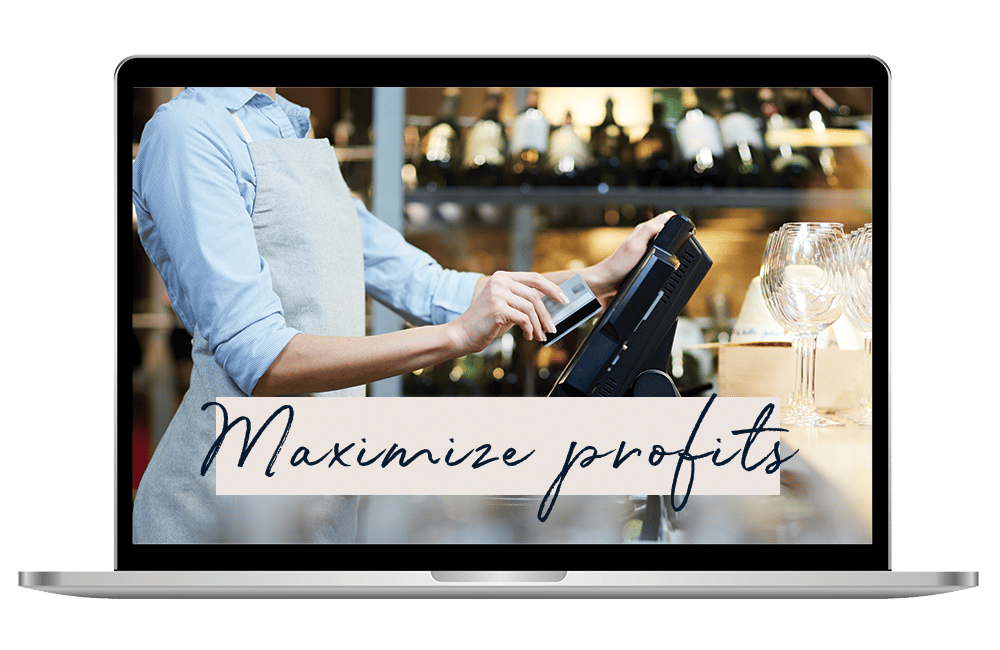
The three costly mistakes you could unknowingly be making?
Find out in this FREE guide and restaurant assessment specifically designed to reveal the unexpected hurdles standing between you and exponential business growth.
Thank You To Our Sponsors


The Employee Retention Tax Credit We will help you determine your eligibility for 2020 & 2021 - Get Started
For a limited time only, popmenu is offering our listeners $100 off your first month plus an unchanging lifetime rate.
Request a DEMO:
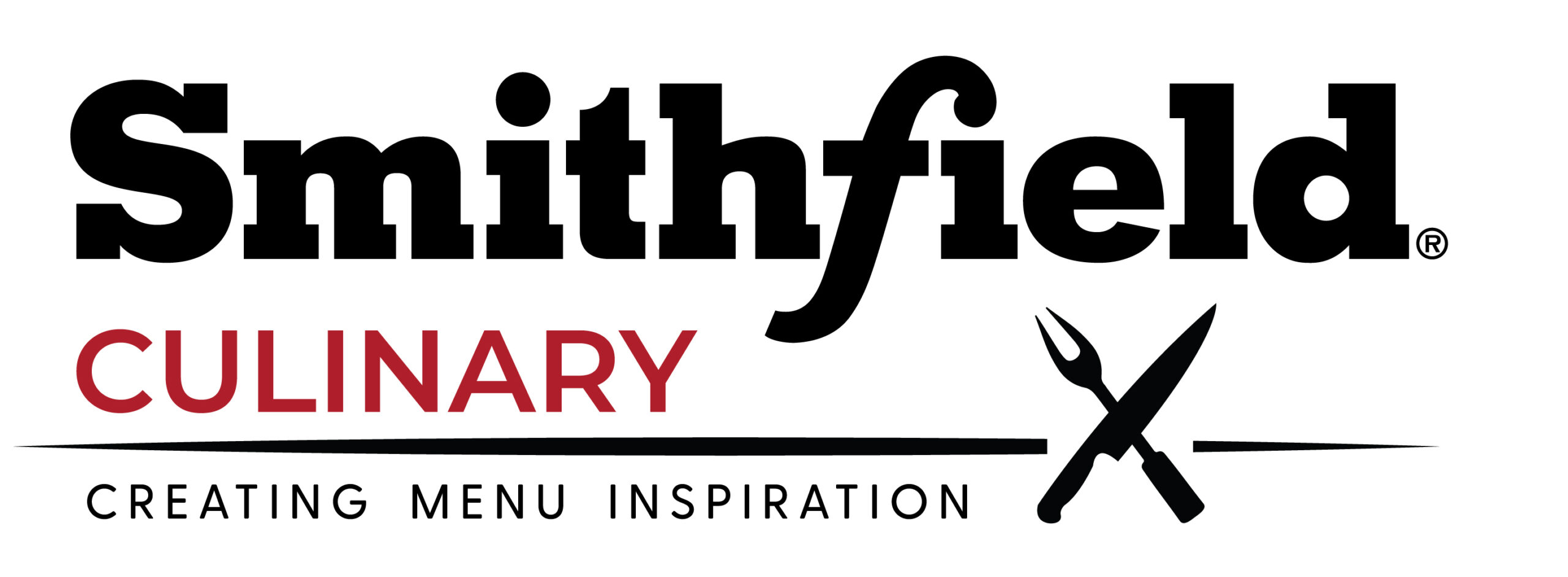
Inspiring Head-Turning Menu Creativity
Culinary Trends & Chef Inspired Recipes - Learn More
Want to become a podcast sponsor?
Please get in touch with Roger at roger@restaurantrockstars.com
